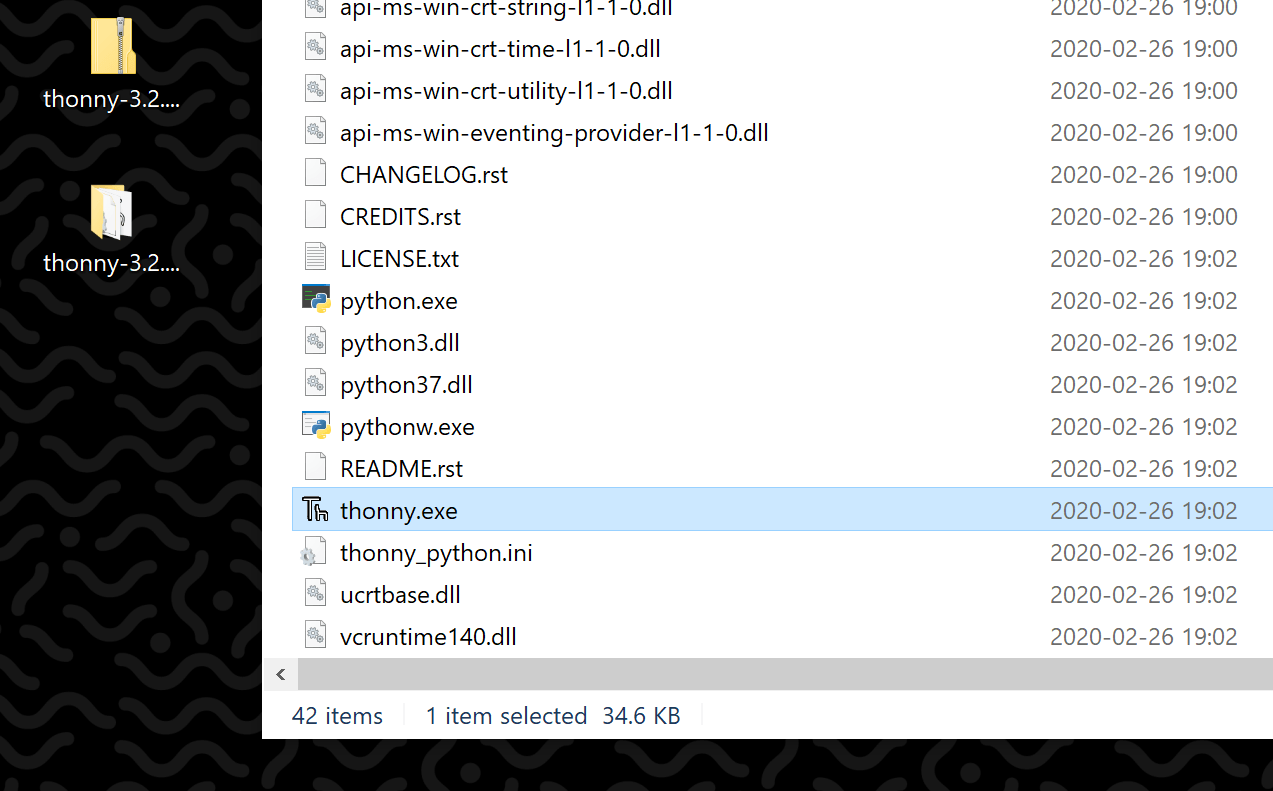
These operators are represents by and, or, and not.
#Conditionals in thonny how to#
In the next section, you’ll learn how to use logical operators in Python! Python Logical Operators: Combining BooleansĪnother way that we can check the truthy-ness of Python statements is to use logical operators. When we convert the values to their ASCII values we can see that this comparison makes a lot of sense: # Converting strings to ASCII Values

You can use the ord() function to check the ASCII value of any string. While the first statement may not surprise you entirely, the second one may cause you to scratch your head a bit. Conveniently, these work in the way you’d expect: # Comparing floats and integers First, let’s take a look at how they work with integers and floats. When we use Python comparison operators, it’s important to get a good handle on how they work with different data types. Some Notes on Comparisons with Data Types In our function, we pass in an argument representing someone’s age and check if the value is greater than or equal to 16.
#Conditionals in thonny license#
Let’s see how we can write a function that checks whether a person is legally allowed to get their driver’s license in Canada, where the legal age is 16: # Writing a function with a comparison operator For example, you can use them in functions to check if, say, users are logged in to an application or if a person meets certain criteria. We can use these comparison operators in many different ways. The different comparison operators in Python Let’s take a look at these operators: Operation There are six main comparison operators in Python, many of which are probably familiar with from math class! One of these is to use comparison operators, which result in a boolean value indicating that a comparison is either True or False. There are many other ways to generate boolean values. Any empty sequence object, such as a string or other object types that you may not know of yet such as listsĪnything that doesn’t fit any of these criteria is actually True! Python Comparisons Operators.

Any value that is either set to False or None.Any representation of zero, whether it’s an integer value such as 0 or a floating point value of 0.0.There are actually very few rules in Python for when an item would evaluate to False. While it might seem like there isn’t any logic behind what’s True and what’s False in Python, it’s actually quite straightforward! In essence, most objects are True. Print("0 has a boolean value of: ", bool(0)) Print("'' has a boolean value of: ", bool('')) Print("'hello' has a boolean value of: ", bool('hello')) Let’s take a look at a few samples and see if you can pick out some rhyme or reason behind this: # Checking the truthy-ness of Python Objects The function will return either a True or False value. We can check the boolean value of any Python object by using the bool() function. What this means is that there is a boolean value assigned to, say, strings such as 'datagy'. Where this gets very interesting is that while we can assign a boolean value to a variable, all other Python objects have an inherent truthy-ness to them.

You can also store them in different container types, such as lists. For example, you can assign the variables, as we did in the example above. Let’s confirm this quickly by checking the types of some of these options: # Checking the types of booleansīooleans can be used as any other value in Python. Similarly, the string 'True' is also not a boolean. This means that TRUE and true would not be a boolean value. For something to be a boolean in Python, it needs to be spelled exactly as True.

Either something is or isn’t true.īefore diving further into the details, let’s speak quick about the semantics of how the value of True is written. Put simple, any boolean expression can be expressed as either True or False. Booleans are named after a mathematician named George Boole, who defined a system for identifying the truths-ness (or truth value) of any given expression.


 0 kommentar(er)
0 kommentar(er)
